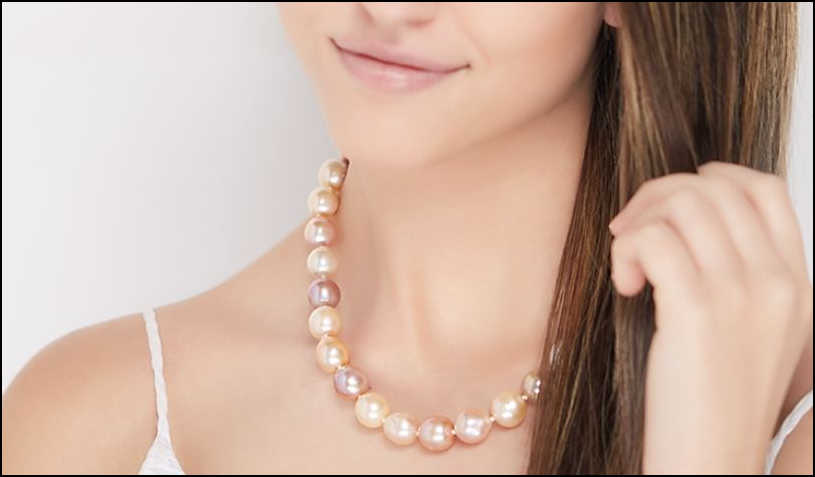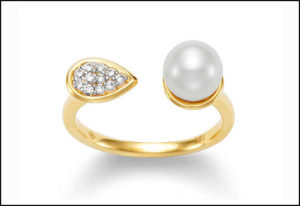Pearl Perceptions Anew
Pearls have a storied past that has established it as a coveted gem, worn by maharajas and queens, celebrities and brides.
But in the past few years, pearls have exploded on the scene anew; breaking boundaries for all that pearls can be in jewelry design and as an accessory and personal style statement.
“Whether they’re presented in leading high-end designer collections for men, illustrating the pages of the hottest fashion magazines or on the screen in hit shows like “The Crown”, pearls are booming,” cheers third generation pearl trader Josh Bazar of the Providence, Rhode Island-based pearl house, Imperial.
It has been a perfect storm of influences converging that has kept pearls in the conversation.
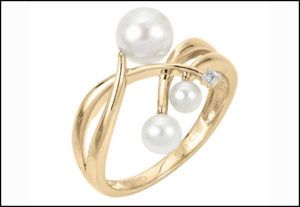 Popular young male entertainers like Harry Styles, Jaden Smith, Nick Jonas, Billy Porter, Pharrell, and A$AP Rocky have been sporting pearl strands, stud earrings and bracelets. Even the Atlanta Braves’ outfielder Joc Pederson wore a pearl strand on his way to win the 2021 World Series. The athlete told reporters: “I’ve done the black chain, the gold chain, and all of those different ones. I just saw pearls and was like, you know what, that looks cool!”
Popular young male entertainers like Harry Styles, Jaden Smith, Nick Jonas, Billy Porter, Pharrell, and A$AP Rocky have been sporting pearl strands, stud earrings and bracelets. Even the Atlanta Braves’ outfielder Joc Pederson wore a pearl strand on his way to win the 2021 World Series. The athlete told reporters: “I’ve done the black chain, the gold chain, and all of those different ones. I just saw pearls and was like, you know what, that looks cool!”
A headline January in NIKKEI Asia reports, “Japan pearl prices surge as men too don the precious beads.” Luxury department store operator Isetan Mitsukoshi Holdings told the publication that “demand for pearls is growing, in particular, among men in their 20s and 30s, known in Japanese pop culture as “pearl boys”.
While brides and pearls is not much of a stretch of the imagination, pearl engagement rings are turning heads, with young celebrities like Emma Stone, Michelle Williams and Ariana Grande engaged with pearl. “When you have someone like Ariana Grande telling the story of the pearl in her diamond engagement ring, from a ring her grandmother made for her with a pearl from her grandfather’s tiepin, that reinforces the messages that pearls carry and the history passed on,” says Kathy Grenier, vice president of business development, Imperial. “Sharing these stories gets people thinking about the possibilities.”
Pearls also have been a prominent accessory on screen, from “The Crown” and the Princess Diana film “Spencer” to the Sex and the City” reboot “And Just Like That,” where Carrie Bradshaw wears a classic 16-inch strand of Akoya pearls, alone and layered with other necklaces. Even fans of the long running game show “Jeopardy” are talking about the pearl necklace worn by Amy Schneider, first transgender contestant to qualify for the show’s Tournament of Champions.
Breaking Boundaries
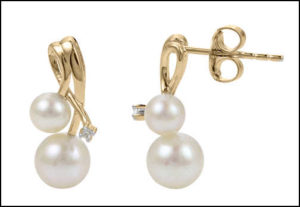 “Pearls are relevant to everyone,” cheers Grenier, who says these trends underscore that most poignantly. While men wearing pearl strands and brides opting for pearl engagement rings are not the mainstay, they signal opportunities in the market for those who call attention to them.
“Pearls are relevant to everyone,” cheers Grenier, who says these trends underscore that most poignantly. While men wearing pearl strands and brides opting for pearl engagement rings are not the mainstay, they signal opportunities in the market for those who call attention to them.
She credits designers, who feature pearls in fresh jewelry designs, as expanding pearl perceptions. Bazar concurs, encouraging jewelers to dismantle any stereotypes that pearls are old fashion, too conservative, and only for brides on their wedding day. “The hottest trends in fashion are being interpreted in pearl jewelry in different colors, shapes, and varieties.” In CPAA’s study nearly a quarter, at 23% would describe pearl from the grandma’s era. That perception needs to be addressed.
But you can be certain that Pinterest’s forecast hailing pearls and pearlescent details top style trends for 2022, will keep pearls front of mind mainstream. If you haven’t heard the term “pearlcore” or “pearly” yet, you will. Not fine jewelry jargon, it comes from the DIY craftcore movement, an aesthetic embracing iridescent accents into your lifestyle. Pinterest finds Gen Z to be driving the “be jeweled” trend, focused on accessorizing your body with gem embellishments. Besides jewelry, the style areas where pearls or pearl-like elements are being used most are in apparel, accessories, nail-art, and makeup.
Young Gens Love Pearls
“Pearls have long existed in the bridal and family heirloom sphere and are finally also being seen as youthful and trendy,” cheers Sarah Cuidon, marketing, production and sales assistant for the N.Y. pearl house Mastoloni. She finds that part of the attraction, is that young gen consumers tend to be more interested in sustainable gems, recycled metals, and equitable practices to market. “A lot of younger buyers are holistic when it comes to their jewelry choices.”
Cuidon finds that a lot of Gen Y and Z consumers self-purchase jewelry because they like it, and to also reward a personal milestone. “We also see men liking pearl basics, primarily strands and studs, especially since they are simple and at the same time unexpected.”
Grenier references the benchmark study conducted last July by MVI Marketing for the Cultured Pearl Association of America (CPAA), for which she also serves as marketing director. Over 1,000 U.S. jewelry consumers were surveyed, aged 25 to 55, 73% women, 27% men.
Consumers aged 25-35 most especially consider pearls to be a top gem to give or receive as a gift, as well as self-purchase. Top among the age groups, 87% of this demographic are likely to very likely to request pearl jewelry as a gift, 58% to buy pearls for themselves, and 85% to gift pearls to loved ones.
Pearls have cultivated a following across demographics, with excitement for pearls especially strong among consumers aged 25-45. “I’m thrilled to see gens Y and Z loving pearls, that gets me excited,” says Grenier.
As CPAA’s survey finds, men aged 25-45 embrace pearls to wear 42%-47% versus 16% of men aged 46-55. And, the youngest demographic, aged 25-35 would be most open to consider a pearl engagement ring, with 36% saying “yes” and 40% “maybe.”
Pearls are definitely advancing into the gender-neutral zone, says Jessica Zerega, director of merchandising gems and pearls for Richline, parent company for the pearl brand, Honora. “Our customers are starting to ask for longer pearl strands and multiple sized bracelets to appeal to all consumers.”
When it comes to pearl engagement rings, Cuidon finds two things happening. “There are many more non-traditional brides wanting a ring that expresses their personality, likes and desires more so than in the past. And, there is a lot of disillusionment with a ‘diamond is forever’. For Y and Z generations there is a desire for their jewelry to represent a promise and commitment that may or may not last a long time. There are a lot more relationships and commitments out there that want their jewelry to represent the uniqueness of their arrangement.”
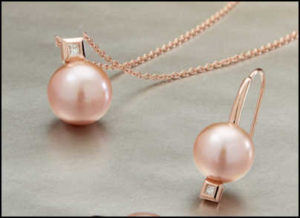 Grenier concurs that people don’t want to feel they have to buy a diamond for their engagement ring. “Pearl has a tradition as a gem of love. It is the go-to accessory for the bride; why not an engagement ring,” she asks, noting that a major retailer approached Imperial to make pearl engagement rings for it to market. “That says a lot for a major retailer to make that commitment.”
Grenier concurs that people don’t want to feel they have to buy a diamond for their engagement ring. “Pearl has a tradition as a gem of love. It is the go-to accessory for the bride; why not an engagement ring,” she asks, noting that a major retailer approached Imperial to make pearl engagement rings for it to market. “That says a lot for a major retailer to make that commitment.”
When retailers look at this category, it’s about them choosing pearls and being vocal to their customers in promoting them, says Grenier. With so many people talking about pearls these days, there isn’t a better time to get into pearls.





